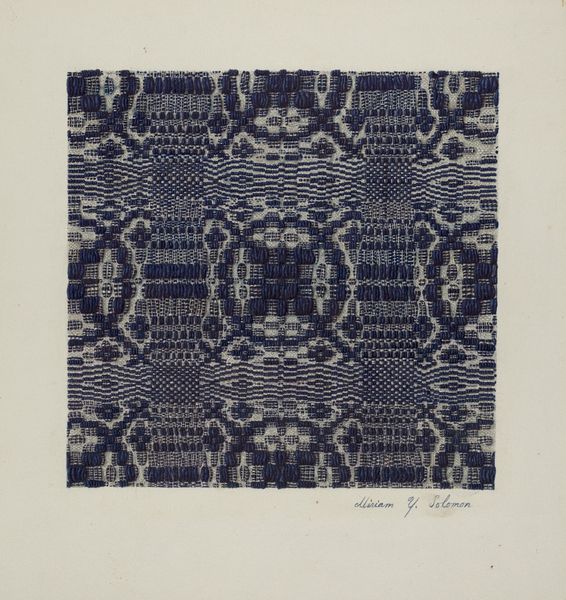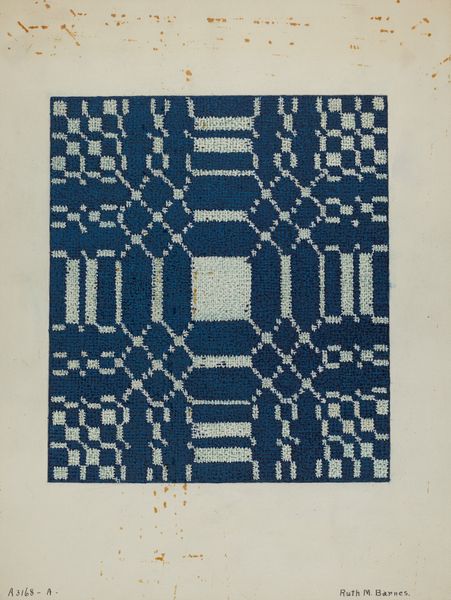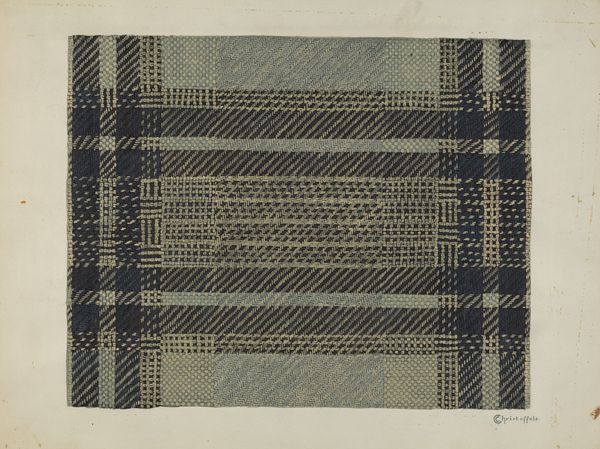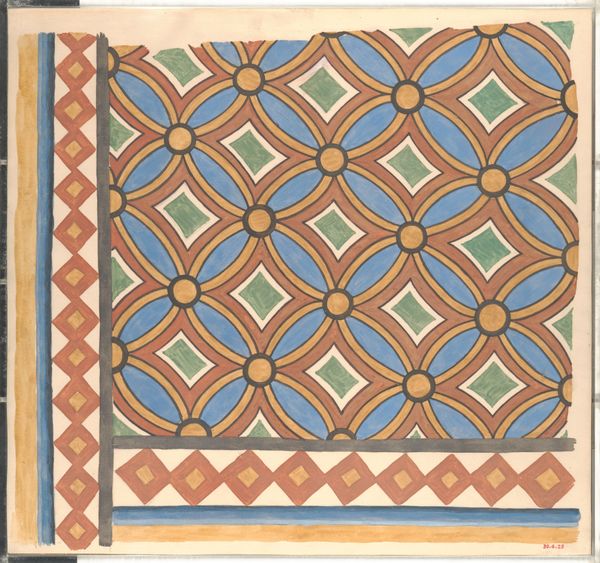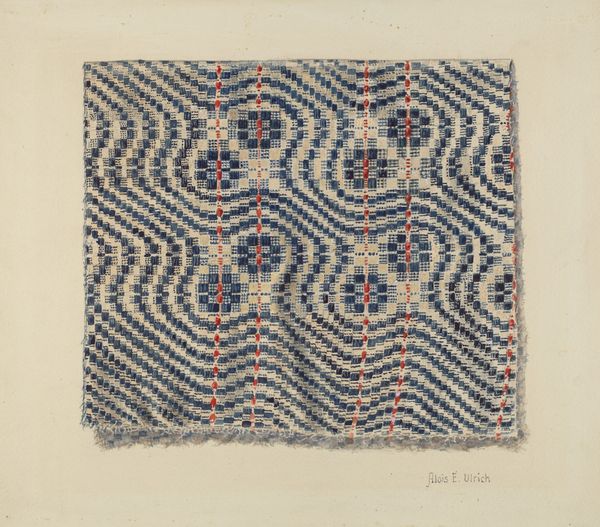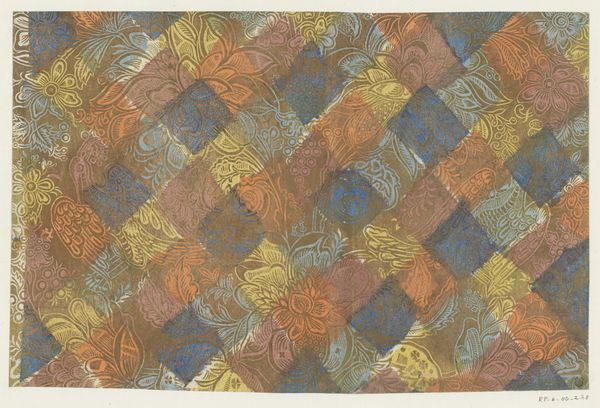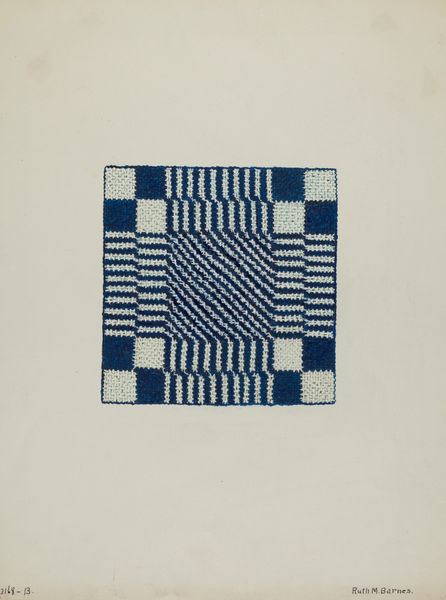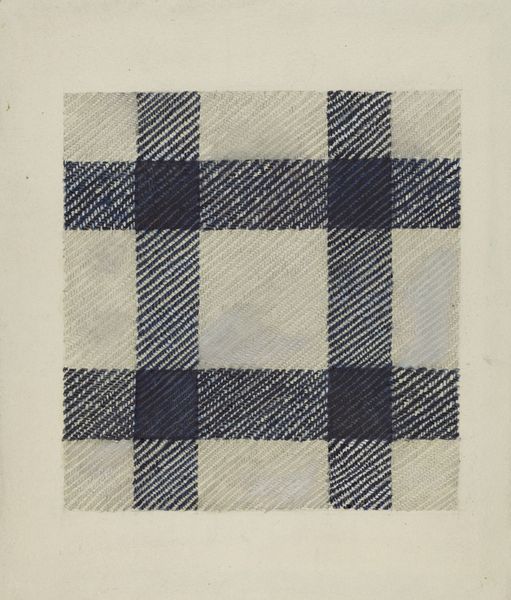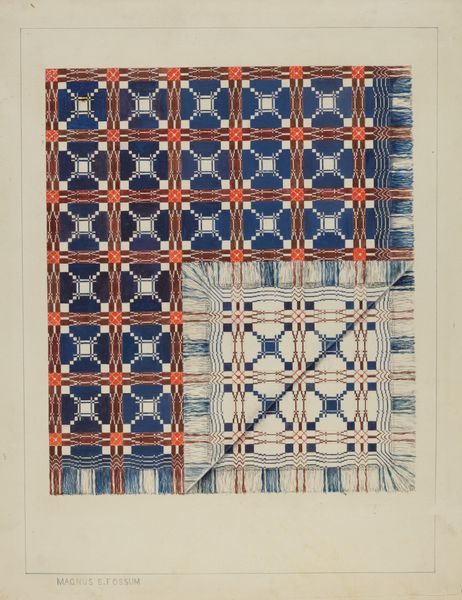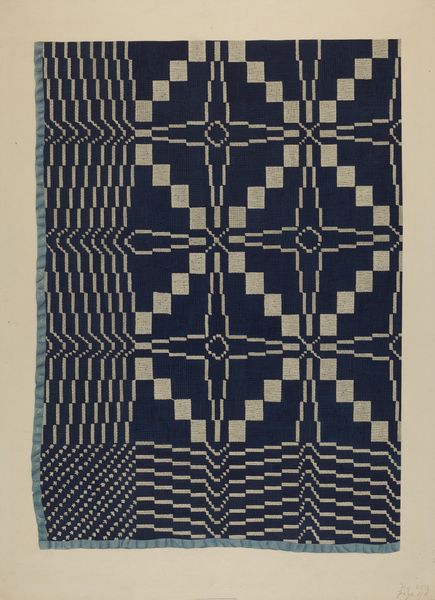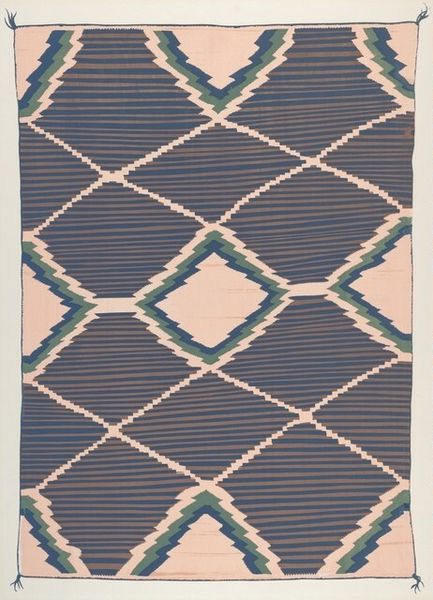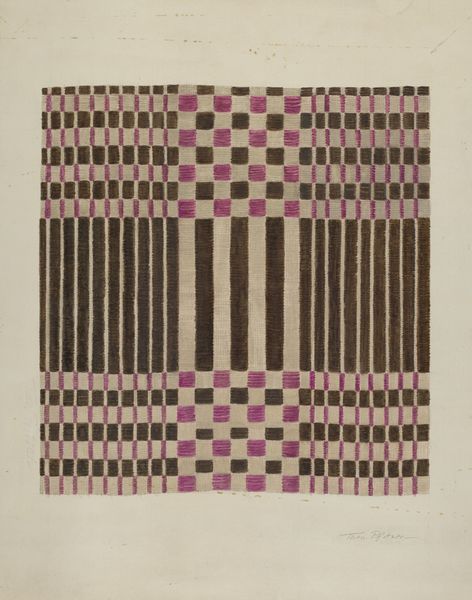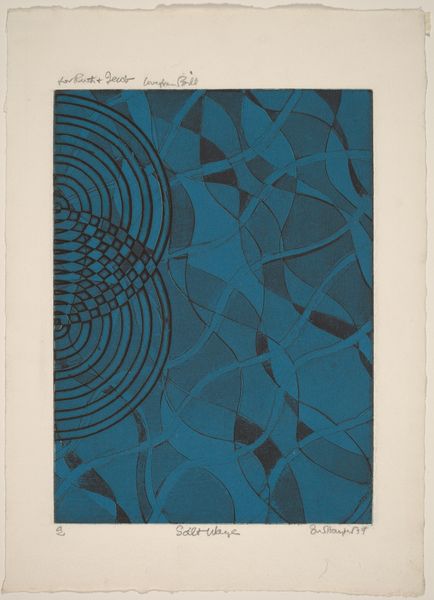
mixed-media
#
natural stone pattern
#
mixed-media
#
concrete-art
#
pattern
#
geometric pattern
#
subtle pattern
#
abstract pattern
#
geometric
#
repetition of pattern
#
vertical pattern
#
abstraction
#
pattern repetition
#
imprinted textile
#
layered pattern
#
combined pattern
#
modernism
Copyright: Hans Hinterreiter,Fair Use
Curator: Here we have Hans Hinterreiter's "Study 225A" created in 1949, a compelling example of mixed-media Concrete Art. Editor: It gives me the immediate sense of organized chaos. A network of overlaid patterns, it’s intriguing yet somehow also restrained with the grey color palette. Curator: Precisely. Concrete Art, after all, strives for a visual language independent of external reference, emphasizing geometric elements as their own reality. Hinterreiter, in this piece, masterfully explores pattern and repetition. Notice the interplay between the blue, red, and yellow lines – how they converge and diverge. Editor: But can we separate such an aesthetic from its cultural context? This was produced in the aftermath of WWII. Do you not think the austerity of the materials, the rigid geometry itself, reflect the societal mood of rebuilding and restructuring? Concrete art moved to visualize a kind of structuralist clarity when the global was shaken with doubt. Curator: Perhaps, but I see it more as Hinterreiter engaging in a purely formal exercise. The title itself, "Study," suggests an analytical approach. He is dissecting geometric relationships, experimenting with visual harmony using limited elements. It is very much in the Bauhausian tradition. Editor: But is that tradition immune to politics or influence? The Bauhaus was famously shut down under Nazi pressure, wasn't it? Hinterreiter's work arises in this historical moment, in Europe scarred with war. These lines and geometric shapes might reflect humanity's persistent urge for order in chaos. What better metaphor to paint or project when society demands restoration after turbulence. Curator: An intriguing idea. Though, the impact lies, undoubtedly, in how the arrangement evokes something complex from fundamental shapes. It embodies an elegant exploration of color, form, and their spatial relationships in abstract geometric arrangements. Editor: And these arrangements reflect a period deeply embroiled in reshaping identity, making peace in forms with stark geometric precision a reflection of this goal for societies to build back up, brick by brick. I concede that the ambiguity keeps it alive! Curator: Indeed. There are countless things it could communicate— and those conversations help keep the work relevant today.
Comments
No comments
Be the first to comment and join the conversation on the ultimate creative platform.
